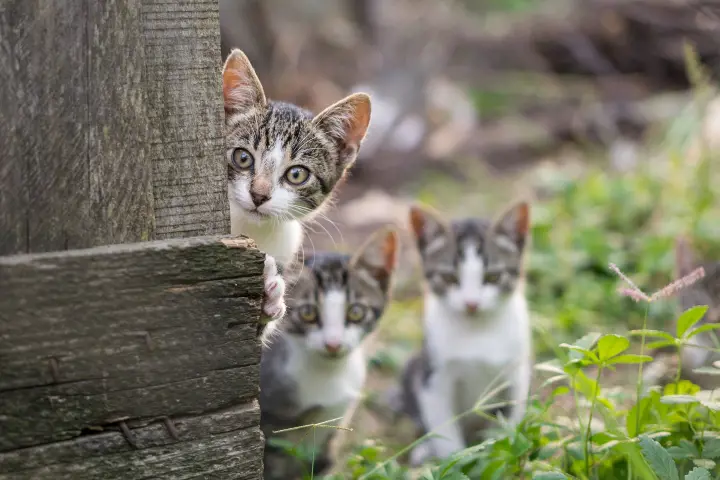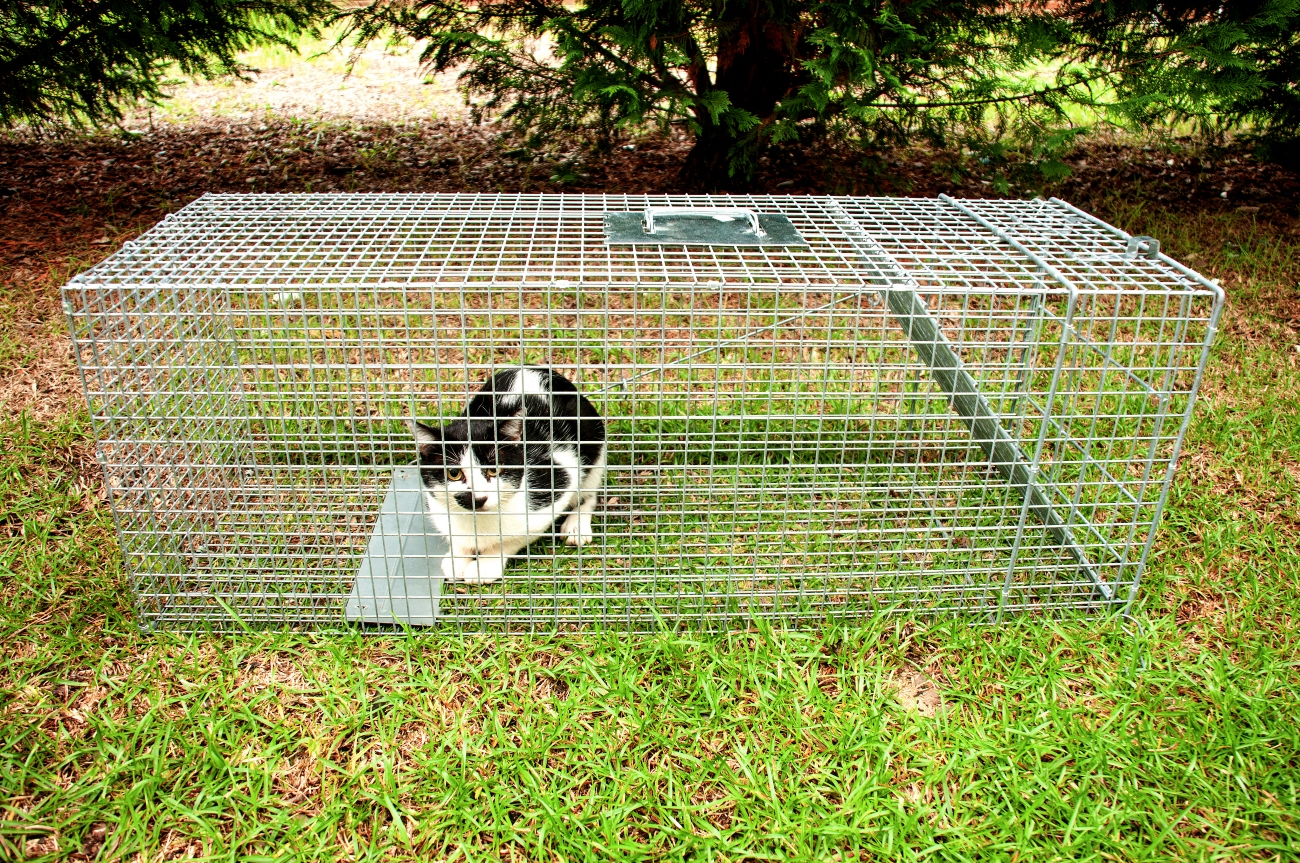Knowing the difference: How to tell if a cat is a stray
27th September, 2023

There's a cat in your neighbourhood that's always around, but you're not sure if it's a stray, an outdoor cat, or simply a well-travelled house cat. Figuring out the difference between a stray or feral cat can be challenging, especially when the feline in question gives mixed signals about its socialisation and domestication status.
To help you decipher the mystery, we've compiled a comprehensive guide on identifying stray cats, complete with advice from experts, tips, and actionable steps. Let's dive in.
Understanding the cat continuum: Stray, feral, and owned Cats
What is a stray cat?
A stray cat is a domesticated cat that, for one reason or another, has found itself living outdoors. This could be due to abandonment, getting lost, or actively leaving their home.
Despite their outdoor living situation, stray cats have been socialised to interact with humans at some point in their lives. This socialisation often makes them more approachable and receptive to human interaction, though their degree of comfort can vary widely.
What is a feral cat?
Conversely, feral cats are those that have had little to no human contact. They are often born in the wild and live their lives without significant interaction with people.
Due to their lack of socialisation, feral cats typically exhibit a greater degree of wariness around humans. Unlike strays, these felines aren't likely to become house pets due to their ingrained distrust of humans.
What is an owned or outdoor cat?
An owned or outdoor cat is a pet cat that is allowed to roam outside by its owners. These cats are typically well cared for and return to their homes regularly. Some may wander far from home, potentially leading to confusion about whether they are strays.
The stray vs. feral vs. owned cat: Key differences
Socialisation to human contact
- Stray cat: Stray cats may approach people, houses, and cars due to their previous socialisation with humans.
- Feral cat: Feral cats are less likely to approach humans and often seek hiding places to avoid human contact.
- Owned cat: Owned cats are typically comfortable around humans and may approach people and houses willingly.
Body language
- Stray cat: Stray cats might walk and move like a house cat, such as walking with tail up—a sign of friendliness. They may make eye contact and appear more relaxed around people.
- Feral cat: Feral cats are more likely to exhibit defensive body language, such as crouching low to the ground or tucking their tails around their bodies. Eye contact is less likely.
- Owned cat: Owned cats usually exhibit relaxed body language and are comfortable making eye contact. They may also respond positively to petting and handling. Learn more about cats body language on a recent blog on our site.
Physical appearance
- Stray cat: Stray cats may have a dishevelled or dirty appearance. They are less likely to have an ear tip, a sign that a cat has been neutered and is part of a trap-neuter-return (TNR) program.
- Feral cat: Feral cats often have well-groomed, clean coats. Males may appear more muscular, and they may have an ear tip if they are part of a TNR program.
- Owned cat: Owned cats are typically well-groomed and may wear a collar or tag indicating their ownership.
Vocalisation
- Stray cat: Stray cats may be vocal, meowing or "answering" when you speak to them.
- Feral cat: Feral cats are typically silent around humans and less likely to meow, purr, or make other vocalisations.
- Owned cat: Owned cats are often vocal and may respond to human voices or familiar sounds, like the opening of a can of cat food.
How to approach a suspected stray cat
If you've identified a potential stray cat, it's important to exercise caution and patience. Here are some steps to follow:
- Observe from a distance: Watch the cat's behaviour from a safe distance. Note if the cat appears friendly, scared, or aggressive.
- Approach slowly: If the cat seems open to human interaction, approach slowly and gently. Avoid any sudden movements that could scare the cat.
- Offer food: If the cat allows, offer some cat food or treats. Remember not to feed the cat regularly as it might encourage them to keep coming back.
- Check for identification: Check for a collar, tag, or signs of a microchip. These are indications that the cat may be owned.
What to do if you find a stray cat
If you've determined that a cat is indeed a stray, here are some actions you can take:
Contact local animal shelters or organisations: Reach out to your local animal shelter or cat protection organisation. They can provide guidance and assistance.
Post on social media: Use your local community Facebook page or other social media platforms to post about the found cat. Include clear photos and any distinguishing features.
Use a paper collar: If it's safe to do so, attach a paper collar to the cat with a note explaining that you've found the cat and providing your contact details.
Check for a microchip: If possible, take the cat to a vet to check for a microchip. This can help track down the cat's owner.
For more information, check out our blog on what to do if you find a stray or feral cat for a few extra tips.
How long before a stray cat is legally yours?
Generally, in many areas, you would need to demonstrate that you have provided care for the cat for a certain period of time, which could range from a few days to several weeks. This could include:
- Feeding
- Sheltering
- Providing medical care
In some places, you may also be required to make an effort to find the cat's original owner, such as posting found ads in local newspapers or online communities.
Legal ownership often comes with responsibilities like:
- Microchipping
- Neutering or spaying
- Vaccinating the cat
It's important to note that in some cases, stray cats may actually be feral and not suitable for domestic life.
Caring for stray cats: The importance of Trap-Neuter-Return (TNR)

Trap-neuter-return (TNR) is a humane and effective strategy for managing community cat populations. It involves safely trapping the cat, having them neutered and vaccinated, and then returning them to their outdoor home. TNR helps control stray and feral cat populations, prevents the spread of disease, and improves the overall well being of the cats.
Is pet insurance necessary for stray cats?
Once a stray cat has been adopted and becomes a pet, it's important to consider getting pet insurance. Pet insurance can help cover the cost of veterinary care, including dental treatment* and emergency treatments.
For a cat insurance quote for your newly adopted feline friend, you can get a quote through our website. If you would like to talk to one of our pet insurance team, you can get in touch with us on 0330 102 5748.
*Dental treatment is only covered for accidents only in year 1 of the policy. Dental illness, however, will not be covered until year 2 of the policy.
Wrapping up: How to tell if a cat is a stray
Identifying a stray cat requires careful observation and understanding of cat behaviour. By understanding the differences between stray, feral, and owned cats, you can make informed decisions on how to help and potentially provide a loving home for a stray cat.
Remember, every cat deserves love and care, whether it's a stray in need of a home or a feral cat living its best life in the wild.
Helpful Pages
Recent Posts
Pet Insurance Quote
- 98% claims paid *
- Claims paid directly to vets
- 24/7 vet video consultations
- Interest free monthly payments




